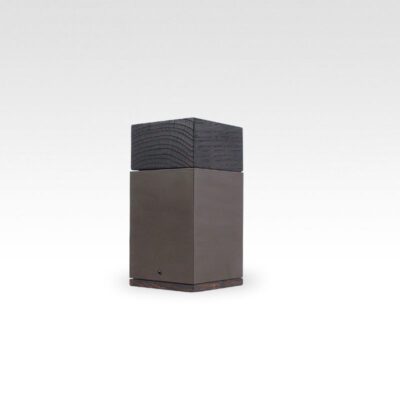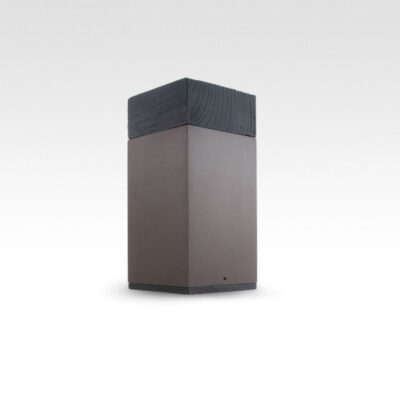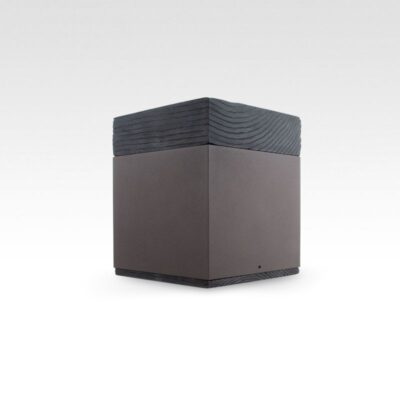How To Transfer Cremated Remains

One Urn To Another
Your funeral professional will likely handle transferring cremated remains for you. Even if you have already taken possession of the cremated remains, your local death care provider will be willing to assist you. There might be a fee and this is to be expected for the following reasons:
- Taking possession of cremated remains incurs a certain amount of liability that funeral homes are prepared and insured for.
- If a funeral professional is transferring cremated remains, they cannot be funeral directing elsewhere. They are employed by a business. Keeping those doors open incurs astonishing overhead. Hiring and maintaining a competent staff is a heroic feat that is difficult to comprehend unless you’ve tried it.
If you decide to transfer cremated remains yourself (legal but emotionally weighty):
- Pick a location with good lighting and little or no wind, preferably with friends/family nearby who can support you.
- Lay out some large pieces of paper.
- Put on some music the deceased loved or will help you through.
- Take a moment – this was a human (or beloved family member). Resist the urge to rush in order to get it over with. Don’t have any plans for a few hours after.
- The remains will (or should be) in a plastic bag – leave them in the bag.
- Carefully remove the bag from the previous receptacle over the paper.If the bag is damaged, Stop. Carefully put bag back in previous receptacle, gather any spilled remains and pour them into the original receptacle using the paper. See funeral professional for transferring remains into a new bag and the new receptacle or consider our Cremated Remains Transfer Kit.
- Carefully place bag into new receptacle.
- Take the time to say some words, have some solemn thoughts, or some loving memories before closing the urn.
If the remains do not fit, you can see a funeral professional about options for portioning out the remains and obtaining an additional keepsake sized urn and/or scattering tube.
Commingling (Mixing) and Dividing
Commingling for companion urns and dividing up cremated remains into urns that are smaller than a full-size urn is becoming more common. Unless there are local laws prohibiting either, your greatest considerations will be logistical, social, and religious rather than legal in most cases. We’re artists, not lawyers or clergy, so please do not consider this legal or religious advice.
Funeral homes and crematoriums have spaces where these practices occur regularly by professionals who know how to handle the details. The fees for this may be inconsequential for you when weighed against the possibility of having particulate of your loved one “on the loose” in your personal space.
For those of you who are comfortable handling this effort on your own, the above instructions are relevant but there are additional considerations. And a few things that will make the task easier:
- calculator
- scale
- additional cremation bags (we include them on request with our urns)
- twist ties (not high tech but the industry uses them despite the ironic and unfortunate association with baked goods)
- permanent marker
- tags or masking tape to label the cremated remains bags
- large scoop for commingling
- scooping device small enough to fit in smallest keepsake urn for splitting or paper for funnel
Calculating the actual volume of the cremated remains and how to distribute can be tough, even with the generally accepted ratio of 1lb of living weight is to 1 cubic inch of cremated remains. That calculation is merely a guide. Before you begin, it is recommended to have an additional backup cremation bag to accept any cremated remains that won’t fit. We rely on this page often to calculate volumes of vessels.
Commingling Cremated Remains

The simplest way to commingle is to place both provided bags in a companion urn that has one single receptacle.
In the case of companion urns that have two receptacles and the cremated remains are not required to touch, one can simply:
- Weigh each individual bag of cremated remains and divide this number.
- Place empty cremation bag on scale.
- Scoop cremated remains, rather than pour, until target weight is reached.
- Close with twisty tie.
- Label both halves for each individual immediately after dividing.
- Place one half of each individual’s cremated remains bag into each receptacle.
- Take the time to say some words, have some solemn thoughts, or some loving memories before closing the urns.
- Close urns.
In the case of companion urns where the cremated remains are required to be physically touching:
- Weigh each individual bag of cremated remains and divide this number.
- Place new, empty cremation bag on scale.
- Scoop cremated remains, rather than pour, until target weight is reached.
- Label half for each individual one at a time after dividing.
- Scoop, rather than pour, cremated remains from individual A into the half from individual B.
- Repeat if there is more than one receptacle.
- Close with twisty tie and relabel as commingled cremated remains.
- Place bag(s) of commingled cremated remains in their respective receptacles.
- Take the time to say some words, have some solemn thoughts, or some loving memories before closing the urns.
- Close urns.
Dividing Cremated Remains

Quantity and sizes of keepsake urns makes this a bit more involved but weight is a good method for dividing the remains.
- Assemble and open all the keepsake urns.
- Weigh the original bag of cremated remains.
- Divide the weight by the number of vessels – this is your target maximum weight per cremation urn to divide equally.
- Line all but one of the keepsake vessels with a new cremation bag (unless the vessel is completely sealed when closed).
- Trim excess bag with a pair of scissors leaving at least 2.5 inches of height past the edge of the urn closure.
- Identify the urn with the smallest volume if they are not all equal in volume.
- Place this smallest urn on scale.
- Carefully open original bag of cremated remains on stable, steady surface.
- Scoop with a scoop that will fit inside the smallest urn, rather than pour, the cremated remains into the keepsake urn until the vessel is 90% full (keep in mind the space any “in-fitting” lids and cremation urn bag will need) or the target maximum weight is reached.
- Continue filling urns until the last one without a bag is reached.
- Place the original bag into this last urn.
- Close bags with twisty ties and potentially label bags as cremated remains.
- Take the time to say some words, have some solemn thoughts, or some loving memories before closing the urns.
- Close urns.
If you reach 90% full before the target maximum weight on the first urn filled, you will have more cremated remains than the urns at hand can house. In this case, retain the remaining cremated remains in their original bag and receptacle and possibly seek additional cremation or scattering urns.
In case of pendants and other “micro” urns, you will not be able to us a bag and may need to create a funnel with a clean sheet of paper.
Disposal of Scoops, Bags, Etc.
This gets into a level of existentialism and religious territory that is a bit sticky.
Are our remains holy? Are we all made of stars? If yes, then every last molecule of cremated remains should be treated as such.
That’s not really practical.
There’s going to be some airborne remains in their handling. Unless one sets up a vacuum system that is devoted to this purpose alone that has a filter on the intake that then gets placed in the urn, this is unavoidable.
Burning is one option. While this will be fine for any paper used as a funnel or wooden scoops, what if the scooping implement used is metal? Burning plastics creates incredibly toxic fumes, so be sure to utilize any originally provided bags rather than being left with one that has the finest dust of the deceased within.
If there is any other method of disposing of these accouterments that you are comfortable with, don’t let anyone else judge you or shame you. Crematory operators cannot get every single molecule of your loved one out of the retort and into the bag, try as they might.
Handling Spills
In the above instructions, step 1 requires at least one assistant. Step 2 requires large sheets of paper to act as a catch if there are any spills or overflow. The latter is SO important. Not everybody has large sheets of paper laying around but they are easy to fold and then channel any small amounts of cremated remains into their respective bag. Newspaper is effective if you don’t mind your loved one being in contact with news (real or fake).
If you choose to use cloth instead of paper, the process of channeling the remains is at least a three-person task.
For any catastrophic spills or accidents, a new, unused dustpan and whisk broom, time, patience, and potentially a dust mask are in order. Imagining this scenario might be enough to convince you to have your local funeral professional handle this task.




